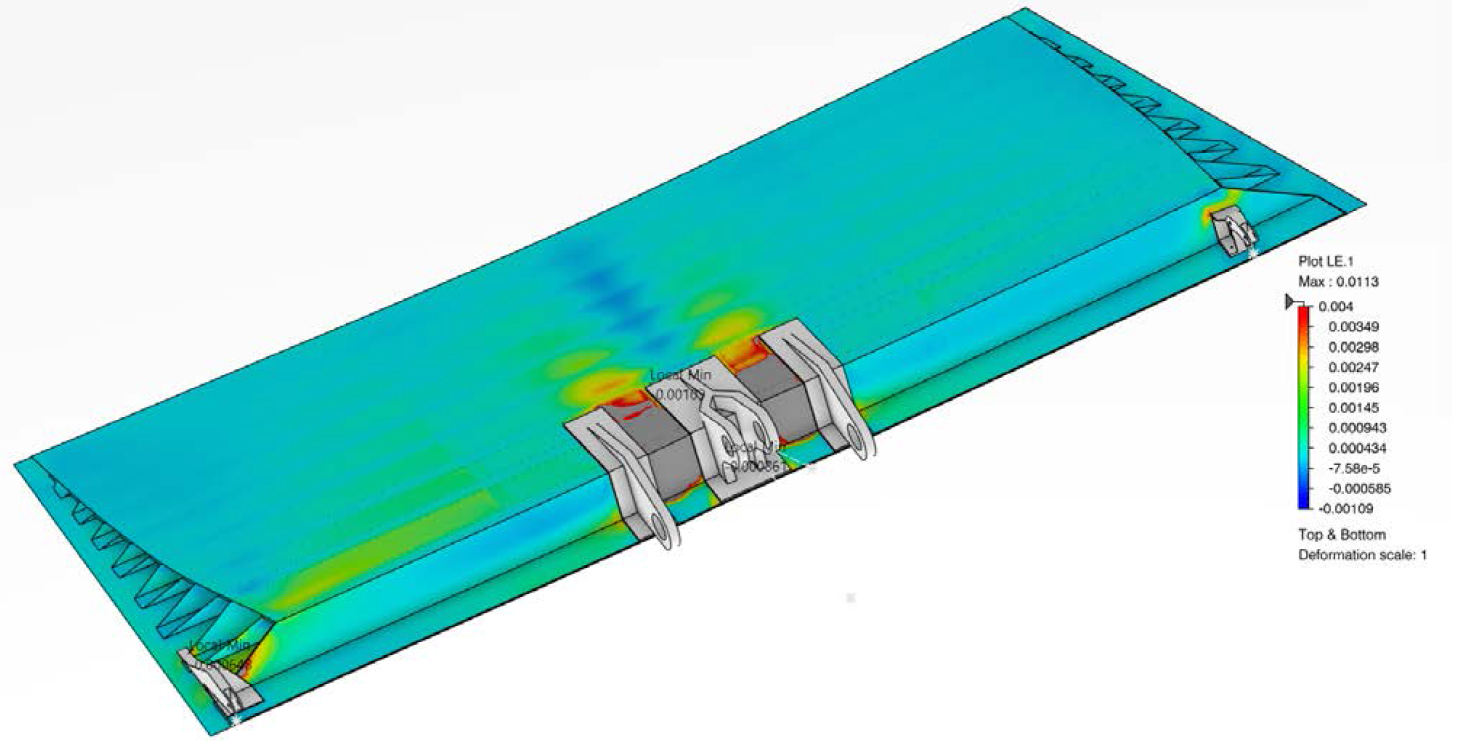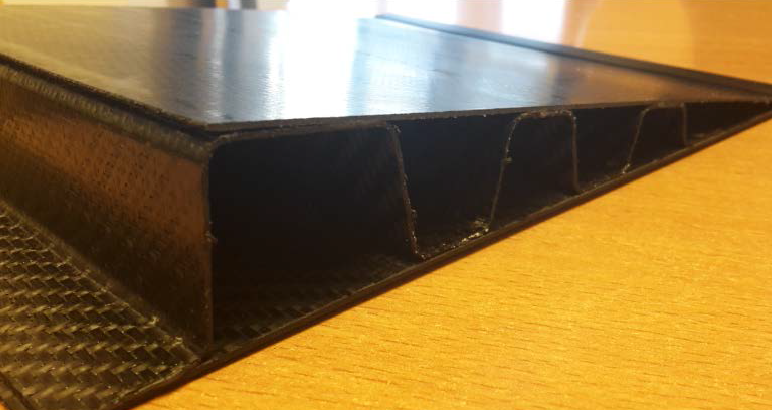Aircraft construction places high demands on structural design and quality of structural components. Aircrafts must have a low dead weight, high loading capacities and long lifecycles while meeting numerous aviation requirements regulating primary structural components. In addition to criteria such as high strength and rigidity, temperature and corrosion resistance, suitable components must be low in specific weight. Due to their excellent property profile, high-performance materials such as carbon fiber reinforced plastics (CFRP) have firmly established themselves in the aviation industry.
The aim of the RTCWinMoSt project was to use thermoplastics as a matrix material in aerospace components. The technological focus of the consortium was on developing these new composite materials for a wider range of applications, especially in the area of wing moveables and primary structural components. Another important aspect in addition to the mechanical properties is the economy in production and operation.
Problem
For the production of structural components from a fiber-plastic composite (FRP) in aviation, primarily epoxy resin (thermoset) is used as a matrix. A big advantage, in addition to the good mechanical properties, is the ease of processing and many years of experience. For the processing of epoxy resin, a chemical crosslinking reaction is started by mixing resin and hardener; the solid molding material is finally created through the crosslinking of the molecular chains. During the production of FRP, fibers are impregnated with the resin-hardener mixture. The hardening of the resin fixes, stabilizes and protects the fibers from the matrix, among other things.














